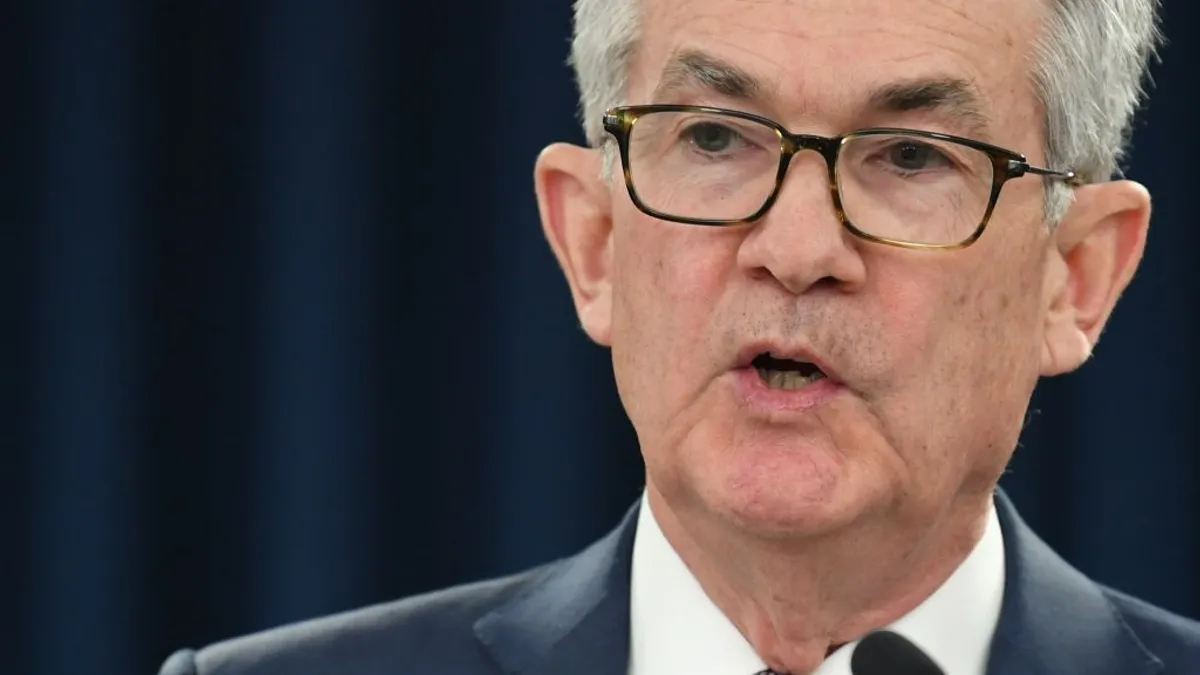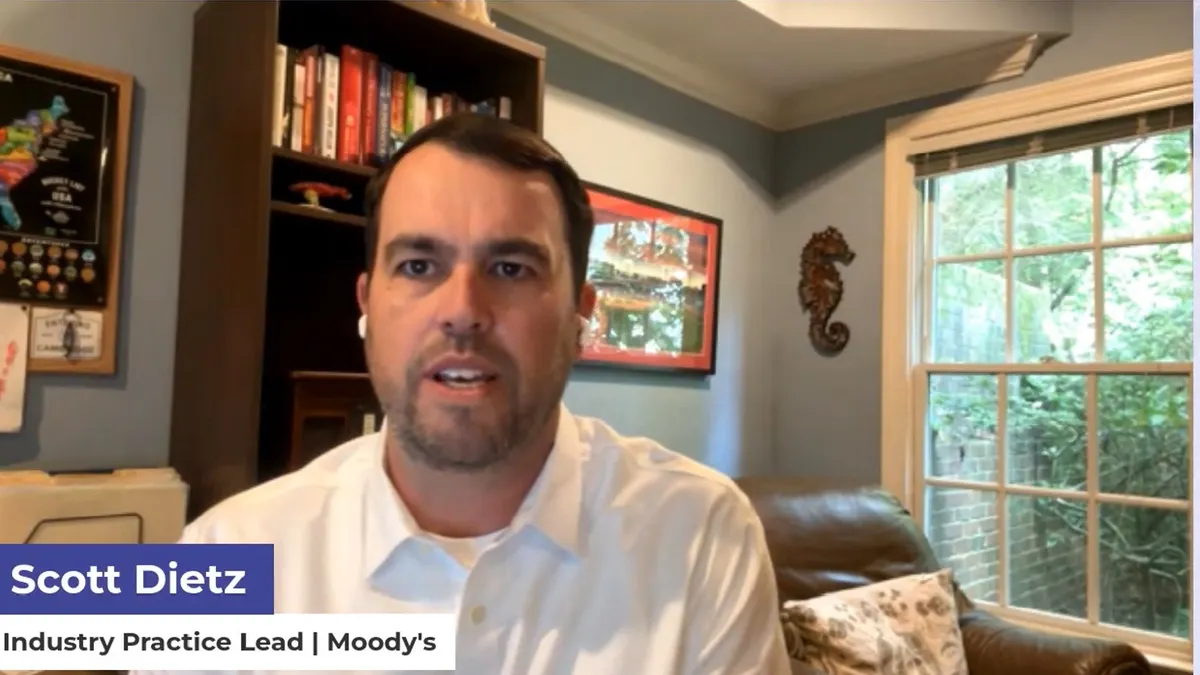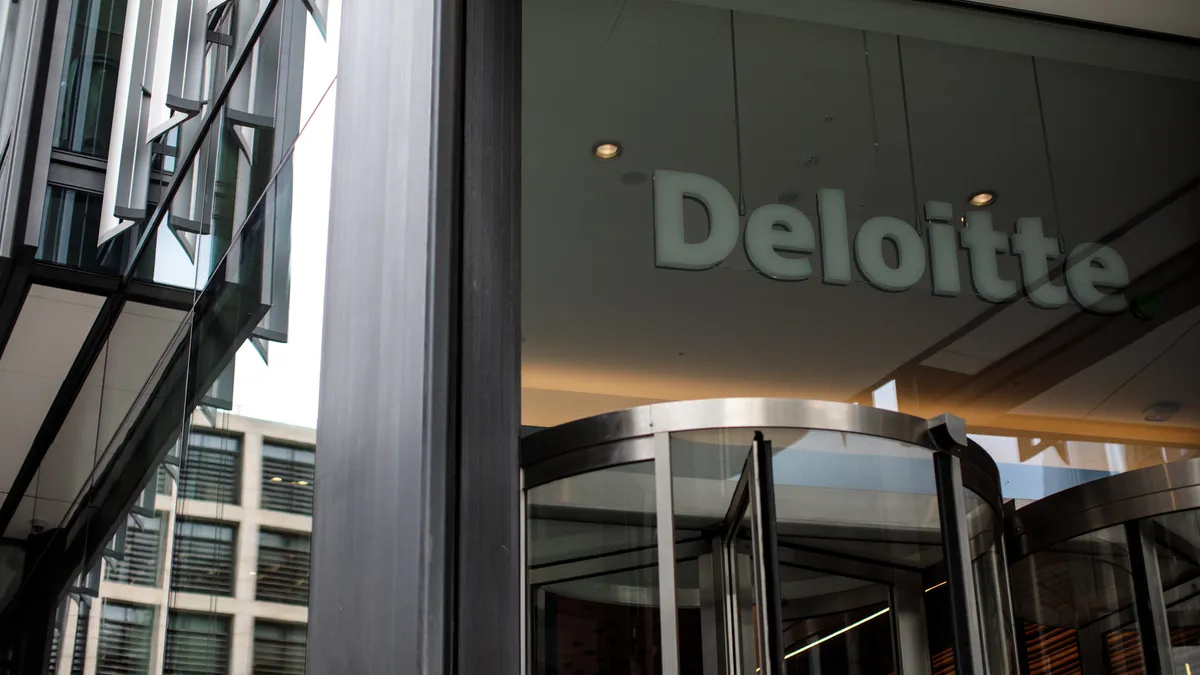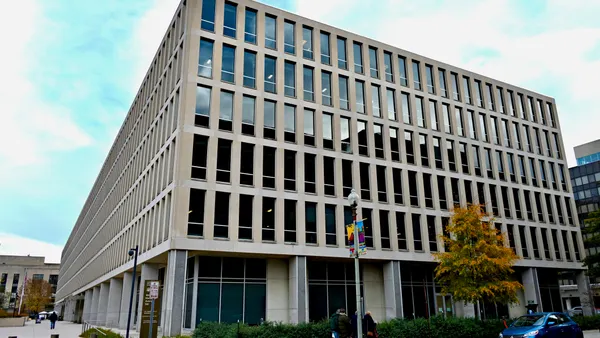Dive Brief:
- Federal Reserve Chair Jerome Powell said on Tuesday that the central bank should put more emphasis on firming up the labor market and less on ensuring price stability even as he flagged growing risks from both rising unemployment and higher inflation.
- Economic trends pull policymakers in opposite directions, Powell said, noting that the highest tariffs since 1933 have so far added roughly 0.4 percentage points to inflation while average monthly hiring since June has slumped to just 29,000 jobs.
- “Near-term risks to inflation are tilted to the upside and risks to employment to the downside — a challenging situation,” Powell said, adding that “two-sided risks mean that there is no risk-free path.” Still, while noting that the Fed’s multi-year effort to restore price stability is incomplete, Powell said, the “stance of having a tight focus on inflation really needs to moderate toward a more balanced approach.”
Dive Insight:
Policymakers on Sept. 17 trimmed the federal funds rate by a quarter percentage point to a range between 4% and 4.25% in the first reduction to borrowing costs this year.
During a post-meeting press conference Powell characterized the decision as a “risk-management cut” intended to bolster the job market.
“There has been a marked slowing in both the supply of and demand for workers — an unusual and challenging development,” Powell said Tuesday. “In this less dynamic and somewhat softer labor market, the downside risks to employment have risen.”
Fed Governors Michelle Bowman and Stephen Miran sounded stronger warnings about the darkening trend in employment.
“Now that we have seen many months of deteriorating labor market conditions, it is time for the committee to act decisively and proactively to address decreasing labor market dynamism and emerging signs of fragility,” Bowman said Tuesday in a speech, referring to the Federal Open Market Committee that sets monetary policy.
Unemployment in August rose to 4.3% from 4.2% in July.
“In my view, the recent data, including the estimated payroll employment benchmark revisions, show that we are at serious risk of already being behind the curve in addressing deteriorating labor market conditions,” Bowman said. “Should these conditions continue, I am concerned that we will need to adjust policy at a faster pace and to a larger degree going forward.”
Miran on Monday dismissed the risk of tariff-induced inflation and called for two, half-percentage-point cuts to the main interest rate next quarter to avert higher unemployment.
“Monetary policy is well into restrictive territory,” Miran said in a speech to the Economic Club of New York. “Leaving short-term interest rates roughly 2 percentage points too tight risks unnecessary layoffs and higher unemployment.”
Fed officials at their meeting last week forecasted two more quarter-point cuts this year.
In a median projection, they estimated that they will reduce the federal funds rate to 3.6% by the end of 2025, or 0.3 percentage point lower than their June projection.
Powell on Tuesday emphasized that policymakers, while aiming to avert more weakness in the job market, will not neglect their other congressional mandate to ensure price stability.
The Fed’s preferred measure of inflation — the personal consumption expenditures index minus volatile food and energy prices — rose 2.9% last month, higher than 12 months ago, Powell said. Policymakers have committed to holding inflation at 2% over the long term.
Tariffs will probably push up prices temporarily, but “a ‘one-time’ increase does not mean ‘all at once,” Powell said. He predicted that import taxes will accelerate inflation “somewhat” over several quarters.
“We will make sure that this one-time increase in prices does not become an on-going inflation problem” he said.














